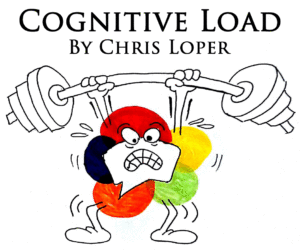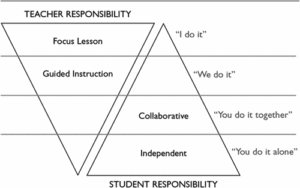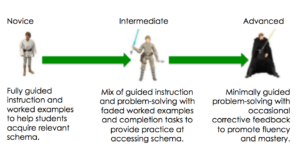Chapter 24 – Prior Knowledge Principle
Summary:
In Chapter 24 of “The Cambridge Handbook of Multimedia Learning” textbook, Slava Kalyuga (2005) discusses the expertise reversal principle. He explains how multimedia learning principles which can be effective for learners who are inexperienced in a specific subject area, can be ineffective for other learners who are already proficient in that same area. Kalyuga describes several examples in which the multimedia principle, modality principle and signaling principle (among others) had positive effects for novice learners, but negative consequences for expert learners. Therefore, this proves his thesis that adaptive multimedia systems can help teachers differentiate their instruction for learners based on their level of prior knowledge.
Expert learners may be at a disadvantage when they are taught with the same learning principles as novice learners due to cognitive overload. Cognitive overload occurs when a learner’s brain is busy sorting through unnecessary information, rather than digesting new knowledge. Kalyuga compares the expertise reversal principle to the redundancy principle (Chapter 10) because advanced learners must still exert valuable brainpower to process information even if it is redundant for them. Kalyuga suggests that expert learners be given less guidance and structure to decrease their cognitive load and thus improve their overall performance. Essentially, expert and novice learners should receive instructional procedures in “reverse.” This means the level of instruction should decrease as students gain knowledge, so as to reduce cognitive load. A strategy otherwise known as the “expertise reversal effect.”
Evidence confirming the impact that the expertise reversal principle has on learning indicates that teachers require more support to develop informed instructional frameworks. Kalyuga explains that, ideally, educators should design lessons that suit the needs of each individual student. Unfortunately, this is difficult to achieve, which is why lessons typically have a fixed design with a focus on novice learners. Whereas more experienced learners are deprived because their needs are being overlooked. Kalyuga calls for more research into identifying specific instructional practices to optimize learning for learners of all levels. Moreover, he argues that the instructional methods must be dynamic, meaning that they adapt as the learner’s level of expertise progresses. One way to begin strategizing is to record and assess each learner’s progress accurately and regularly. Kalyuga concludes that asserting dynamic and adaptive multimedia systems that factor in prior knowledge is most effective for enhancing learning.

Synthesis :
In this section, we will link the expertise reversal principle to other research and connect this information to educational practice to further develop our ideas. Chapter 24 pointed out that while novice learners required more support to learn effectively, lower levels of support were more constructive for expert learners. Instructional scaffolding denotes the amount of support given to a student during instruction. The Gradual Release of Responsibility (GRR) model aims to “mov[e] classroom instruction from teacher-centered, whole group delivery to student-centered collaboration and independent practice” (Levy, 2007).

Educators can let the GRR model inform lesson plan design by incorporating demonstration, prompt and practice into instruction. In other words, transitioning from and moving in between the phases of: I do it (direct instruction), we do it (guided instruction), you do it independently (independent practice) and you do it together (collaborative learning). The model reiterates how important it is to take into account students’ prior knowledge when scaffolding a lesson plan. Learners need increased assistance and guidance when they are introduced to new material, but as they become more knowledgeable they require less support. As previously mentioned, excess support can detriment learning and lead to cognitive overload.
Since schooling may continue online come fall due to COVID-19, addressing the GRR model during lesson plan design will become increasingly important. If possible, teachers should provide multiple means of instruction for any given subject so students can engage with the content according to their level of expertise. Consider organizing a lesson about underwater animals: a student who lives in the desert might enjoy an introductory PowerPoint informed by the multimedia principle which highlights keywords and pictures. Whereas a student who lives on the beach might prefer a simpler form of instruction informed by the expertise reversal principle, such as a text-only article.
Kalyuga explains that “an instructional format without redundant guidance would allow more experienced learners to use their available schema-based knowledge structures held in long-term memory in the most efficient way” (2005). Of course, tailoring instruction to suit the changing levels of learner expertise requires significant time and effort on behalf of the teacher. However, such planning is necessary to provide choice for all students, and more specifically to this topic, prevent cognitive overload for expert students. Yet another argument in support of differentiated instruction.
Carol Tomlinson and Tonya Moon (2013) point out the principle of “teaching up” in their book Assessment and Student Success in a Differentiated Classroom. They encourage educators to “beg[in] planning student work by developing tasks that would invigorate students who are advanced in a topic or content area and then differentiate by providing scaffolding that enables the range of less advanced learners to work successfully with the advanced-level task” (p. 8). Sometimes as teachers, our desire to see every student succeed means we spend most of our time tailoring instruction to novice learners rather than seeing the potential of expert learners. Differentiation ensures each learner’s readiness is routinely assessed so everyone is challenged to the best of their abilities during instruction.
Here is a graphic to help further your understanding of the expertise reversal principle. If you compare this to the GRR model graphic above it is evident how closely related the two are.

References:
Didau, D. (2020, February 17). When do novices become experts? David Didau. https://learningspy.co.uk/psychology/novices-become-experts/
Gradual Release of Responsibility (GRR) Instructional Framework. (2018, October 8). Wisconsin Department of Public Instruction. https://dpi.wi.gov/ela/instruction/framework
Kalyuga, S. (2005). Prior Knowledge Principle in Multimedia Learning. In R. Mayer (Ed.), The Cambridge Handbook of Multimedia Learning (Cambridge Handbooks in Psychology, pp. 325-338). Cambridge: Cambridge University Press. doi:10.1017/CBO9780511816819.022
Kayla. (2017, November 27). Expertise Reversal Effect. [Video]. YouTube. https://www.youtube.com/watch?v=FzGY9dp7Neo
Levy, E. (2007). Gradual Release of Responsibility: I do, We do, You, do. Retrieved from https://www.washoeschools.net/cms/lib/NV01912265/Centricity/Domain/257/Certified%20Hiring/GradualReleaseResponsibilityJan08.pdf
Loper, C. (2016). Cognitive Load. Retrieved from: https://www.nwtutoring.com/2016/07/07/cognitive-load/
Moon, Tonya R. & Tomlinson, Carol A. (2013). Assessment and Student Success in A Differentiated Classroom. Association for Supervision & Curriculum Development.
Recent Comments